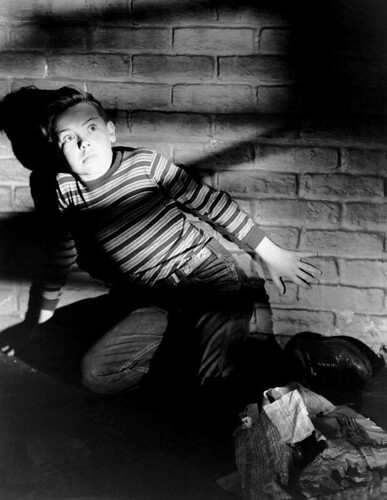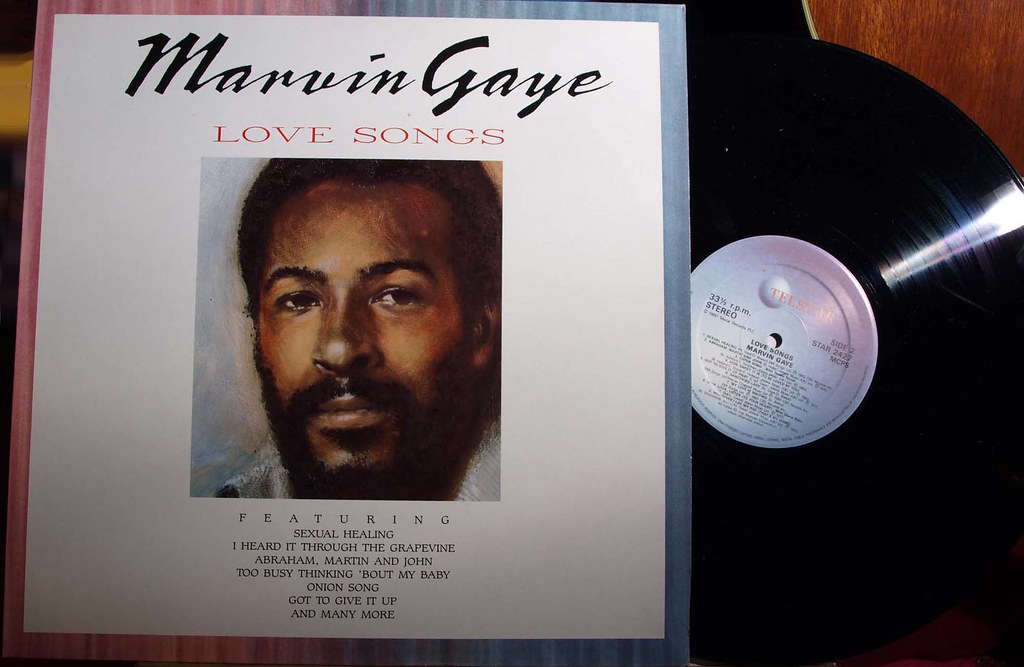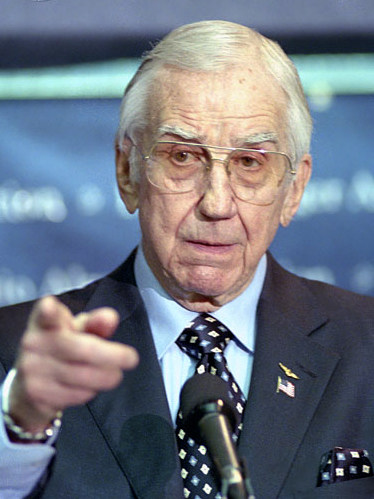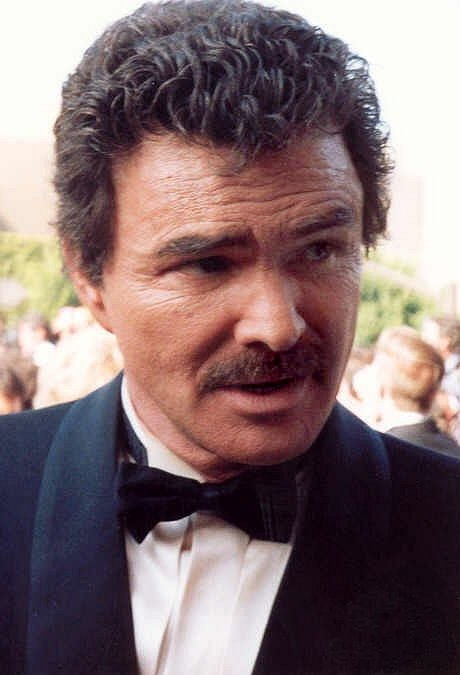
Hollywood. The very word itself is a shimmering mirage, evoking images of boundless glamour, extravagant lifestyles, and mansions sprawling across the California hills. For decades, the silver screen, and later, the television set, brought us legendary figures whose lives appeared to be a seamless tapestry of triumphs, endless adoration, and, seemingly, immeasurable wealth. We, the eager audience, often bought into the fantasy, believing that once a star reached the pinnacle of fame, their financial future was eternally secured, a well-deserved reward for their extraordinary talent and captivating presence. It’s an intoxicating notion, the idea that a life of celebrity inherently translates to a life free from mundane monetary worries.
However, the truth behind the Tinseltown facade can often be far more complex, and frankly, heartbreaking. Beneath the glittering surface of celebrity, a different, often darker, narrative sometimes unfolds. The relentless glare of the spotlight, the unique pressures that accompany widespread recognition, poor financial management decisions, or even profound personal struggles, can unexpectedly steer even the most adored and successful individuals down a treacherous path of financial instability. It serves as a stark, poignant reminder that while a natural gift for performance can unlock numerous doors, it tragically doesn’t always guarantee a stable bank account or lasting economic security. The stories we are about to explore challenge our deeply ingrained perceptions, revealing that even some of the most celebrated and iconic personalities found themselves in surprisingly dire financial straits when their final curtain call arrived.
In this deep dive, guided by an intriguing, fact-focused lens, we embark on an illuminating journey into the lives of six extraordinary individuals. These are stars whose fame soared to incredible, unprecedented heights, but who, through a confluence of circumstances, faced significant financial distress, and in some cases, outright destitution, at the moment of their passing. Prepare to uncover the frequently untold, often tragic truths about the ultimate chapters of these legendary figures, a sobering reality that stands in profound contrast to the dazzling, idealized images we have so long cherished.

1. **Bobby Driscoll: The Child Star’s Harrowing Descent into Destitution**Bobby Driscoll was, for a period, the quintessential child star of Hollywood’s golden age. His cherubic face and undeniable acting prowess graced the screens throughout the late 1940s and early 1950s, earning him widespread adoration and critical acclaim. He charmed millions in Disney’s “So Dear to My Heart,” embarked on thrilling adventures in “Treasure Island,” and, perhaps most famously, lent his distinct voice and persona to the immortal character of Peter Pan, forever cementing his place in cinematic history. His early career was a picture of burgeoning success, promising a dazzling future filled with endless opportunities.
However, the very industry that propelled Driscoll to stardom also proved to be his undoing. The often-turbulent transition from beloved child actor to adult performer is notoriously challenging, and for Driscoll, it was particularly brutal. As he matured, the roles became scarce, and the intense pressures that accompany early fame began to take a severe toll. This period of his life was tragically marked by a descent into the perilous world of drug addiction, a path that has ensnared countless young talents unable to navigate the complexities of their unique circumstances. His bright star, once shining so brilliantly, began to tragically dim.
The final chapter of Bobby Driscoll’s life is perhaps one of the most heartbreaking tales in Hollywood history. He died in 1968, at the incredibly young age of 31. His passing was attributed to a condition known as hardening of the arteries, a devastating medical consequence explicitly linked to prolonged drug use. This tragic cause of death paints a vivid picture of the struggles he endured far from the public eye and the lavish sets of his youth.
The stark reality of his financial and social situation at the time of his death is truly shocking, especially for someone who had once been a major studio asset. According to Entertainment Weekly, Driscoll’s body was not found in a grand mansion or a comfortable apartment, but rather by a group of children playing in an abandoned New York tenement building. This detail alone speaks volumes about the level of destitution and isolation he experienced in his final moments. It was a profoundly undignified and lonely end for a star who had once brought so much joy to millions.
The ultimate and most somber testament to his financial plight and the tragic loss of his former status came after his passing. The once-celebrated, universally recognized child star was laid to rest in an unmarked grave. It stands as a stark, silent memorial to a career that began with such dazzling promise and ended in utter anonymity and financial ruin. Driscoll’s story is a powerful, cautionary tale, illustrating the fragility of fame and the profound impact of personal battles on even the most talented individuals.
Read more about: The Lingering Shadows of Stardom: Unraveling Hollywood’s Most Mysterious Disappearances and Retreats

2. **Corey Haim: The Teen Idol’s Steep Fall into Bankruptcy**Corey Haim was undeniably a defining face of 1980s cinema, a quintessential teen idol who captured the hearts of a generation. His charismatic screen presence and signature boy-next-door charm, particularly when starring alongside his frequent collaborator Corey Feldman, made him a prominent figure in youth-oriented films. Movies like “The Lost Boys” solidified his status as a recognizable star, seemingly paving the way for a prosperous and enduring career in Hollywood, where financial success often appeared to be an inevitable byproduct of such fame.
However, beneath the surface of his teen idol status, Haim’s life was a maelstrom of personal turmoil. His well-documented struggles with substance abuse became a pervasive force, exerting immense pressure not only on his health and professional trajectory but also, crucially, on his financial stability. The once-lucrative paychecks that flowed during his heyday as a sought-after young actor gradually diminished, replaced by a relentless accumulation of debt and an escalating difficulty in securing consistent, meaningful work within the industry. This personal battle was a direct catalyst for his subsequent financial unraveling.
The extent of Corey Haim’s financial woes became disturbingly apparent in the years leading up to his untimely death. In a major and public sign of distress, he formally filed for bankruptcy in 1997. This significant legal action revealed a shocking level of debt, including a substantial $100,000 owed to the formidable IRS, alongside an additional $100,000 in other outstanding obligations. For a star who had once graced magazine covers and commanded significant box office appeal, this level of financial insolvency was truly a surprising and tragic downturn.
The desperation of his situation intensified to a point where, by 2001, Haim reportedly resorted to truly extraordinary and heartbreaking measures in an attempt to generate some much-needed cash. He allegedly tried selling incredibly personal, almost macabre items such as a tooth and some of his own hair on eBay. This anecdotal detail, if true, profoundly underscores the depth of his financial predicament and the extreme lengths to which he was driven to survive. It paints a vivid picture of a once-adored celebrity battling for mere subsistence.
His friend and fellow actor, Corey Feldman, provided a chilling confirmation of Haim’s final financial state. Feldman candidly revealed that Haim was “so broke” when he passed away in March 2010 that he did not even possess a car. This final detail crystallizes the tragic reality of Haim’s last days, a world away from the glamorous image he once projected. His journey from celebrated teen idol to a financially ruined individual highlights the often-perilous intersection of early fame, personal demons, and the brutal realities of the entertainment industry.

3. **Marvin Gaye: The Soulful Voice Silenced by Financial Hardship**Marvin Gaye remains an unassailable titan in the pantheon of music legends, a voice that effortlessly blended soul, R&B, and pop, crafting an indelible legacy that continues to resonate across generations. His discography is adorned with timeless, socially conscious anthems like “What’s Going On” and deeply romantic ballads such as “Mercy, Mercy Me,” which solidified his status as a globally celebrated artist. Commercially, Gaye achieved stratospheric success, earning him a reputation that should have insulated him from any mundane financial anxieties, positioning him as a star whose wealth matched his artistic genius.
However, the extraordinary brilliance and widespread acclaim of his musical career often served as a fragile veil, delicately concealing a remarkably turbulent and often financially challenging personal life. One of the most significant and publicly documented turning points in his financial narrative was his high-profile divorce from Anna Gordy, who was the sister of the formidable Motown founder, Berry Gordy. This legal separation was not merely an emotional upheaval but a profound financial drain that placed immense pressure on his accumulated wealth and his capacity to maintain a semblance of economic stability.
The full extent of Marvin Gaye’s financial predicament became acutely public when the revered “What’s Going On” singer, despite his monumental success, was compelled to file for bankruptcy. This admission of insolvency was a shocking revelation to many fans who associated him with perpetual success. In an almost unprecedented and truly extraordinary move, indicative of his severe lack of readily available assets, Gaye agreed to a highly unconventional settlement arrangement with Anna Gordy in lieu of traditional alimony payments.
Under the terms of this unusual agreement, Marvin Gaye committed to the arduous task of recording an entirely new studio album. This record, which would later become the famously poignant and critically acclaimed “Here, My Dear,” was explicitly created with the understanding that all of its resulting royalties would be directly handed over to Anna Gordy. It meant that a musical genius, whose creative output was treasured worldwide, was essentially dedicating his artistic labor to settle a divorce debt, without receiving any direct personal financial benefit from his latest work.
This extraordinary arrangement vividly underscores the surprisingly vulnerable financial position in which one of music’s greatest stars found himself. It highlights a period where, despite his enduring cultural impact and ongoing artistic prolificacy, his personal finances were entangled in a complex and publicly challenging struggle. Marvin Gaye’s story offers a powerful, bittersweet lesson: artistic genius and widespread adoration do not always translate into lasting financial peace, and even the most iconic figures can face bewildering economic downturns.

4. **Ed McMahon: The Grand Announcer’s Silent Financial Troubles**Ed McMahon was a definitive fixture of American television for decades, instantly recognizable as Johnny Carson’s jovial sidekick on “The Tonight Show.” His booming voice, infectious laugh, and the iconic catchphrase “Heeeere’s Johnny!” became deeply synonymous with the golden age of late-night entertainment, projecting an image of enduring success and, naturally, significant, effortless wealth. For countless viewers, he represented the epitome of a dream career in television, a celebrity whose financial security seemed as unshakable as his unwavering on-screen presence. It was widely assumed that a career spanning such incredible heights, constantly in the public eye, would inherently shield him from the more mundane, distressing worries of monetary hardship, a pervasive belief powerfully reinforced by his consistently cheerful public persona.
Yet, behind that familiar, endlessly smiling facade, a vastly different and unsettling financial reality was quietly unfolding for McMahon in his later years. By 2008, a mere year before his passing, this television icon found himself in dire straits, battling fiercely against the imminent and public threat of foreclosure on his magnificent $4.8 million Beverly Hills home. Lenders were aggressively pursuing him for a substantial $644,000 in owed payments, a shocking public revelation that sent immediate ripples through the entertainment industry and among his vast legion of loyal fans. This abrupt and profoundly public unraveling of his personal finances stood in stark, almost unbelievable contrast to the image of effortless affluence he had always seemed to embody, fundamentally challenging the public’s deeply ingrained perception of his gilded, worry-free life.
In a rare moment of profound candidness, McMahon shed vital light on the intricate complexities of his predicament during an illuminating interview with broadcasting legend Larry King, offering a poignant glimpse into the deeply personal decisions and powerful external pressures that cumulatively contributed to his surprising financial decline. He plainly stated, with a hint of resigned honesty, “Well, if you spend more money than you make, you know what happens.” He further elaborated, citing a confluence of contributing factors including “a couple of divorces thrown in, a few things like that,” which had significant financial repercussions, coupled with the broader, unforgiving economic downturn of the time and a debilitating personal injury. This honest and deeply personal assessment painted a vivid picture of a man whose relentless attempts to maintain a perfect public image and a generous, expansive lifestyle ultimately proved to be far beyond his actual earnings, creating an unsustainable trajectory.
McMahon’s story thus serves as a powerful and profoundly poignant reminder that even those who appear to possess boundless success and an enviable lifestyle can, in fact, face profound and often hidden financial vulnerability. His journey from an iconic symbol of American prosperity to facing the very real threat of foreclosure in his final years underscores the unpredictable, often brutal, nature of personal finance, even for individuals at the absolute zenith of public admiration. It’s a compelling testament to how easily life’s unforeseen challenges, coupled with unchecked personal spending and external economic forces, can gradually erode even the most robust and seemingly secure fortunes, leaving behind a legacy shadowed by unexpected hardship, a far cry from the glittering, untroubled image he so masterfully projected for decades.

5. **Burt Reynolds: The Bandit’s Rocky Road Through Bankruptcy**Burt Reynolds, with his distinctive smirk and unparalleled swagger, carved out an unequivocally iconic place in Hollywood history, forever synonymous with rugged charm, undeniable charisma, and an unmatched box office appeal. Throughout the booming 1970s and 80s, his electrifying performances in films like “Smokey and the Bandit,” the adrenaline-fueled “Cannonball Run,” and the intense drama “Deliverance” cemented his status as a leading man of unparalleled stature, catapulting him to become one of the era’s absolute highest-paid and most universally beloved stars. His life seemed, from the outside, to perfectly epitomize the grand excesses of celebrity, complete with a lavish lifestyle, high-profile relationships that dominated headlines, and the kind of larger-than-life presence that effortlessly suggested an endless, bottomless wellspring of financial resources, a testament to his immense and widespread popularity.
However, behind the dazzling, almost impenetrable facade of his superstar career, Reynolds was grappling with significant and remarkably prolonged financial difficulties, a deeply personal struggle that became intensely public and inescapable following his highly publicized and acrimonious divorce from actress Loni Anderson. This bitter and costly legal separation, which reportedly drained his finances of a staggering sum, acted as a major, undeniable catalyst for his ultimate financial unraveling, forcing him to make the drastic decision to declare Chapter 11 bankruptcy in 1996. The subsequent legal proceedings painstakingly laid bare a complex and bewildering web of debts, outstanding payments, and a substantial accumulation of financial liabilities that profoundly shocked both the public and his industry peers alike, vividly revealing the heavy personal cost of his fame and certain personal life choices.
Even many years after his initial bankruptcy filing, a clear indicator of the persistent nature of his financial woes, Reynolds continued to face formidable and often relentless financial challenges, powerfully illustrating the long-lasting and often devastating impact of such severe setbacks. As recently as August 2011, a mere seven years before his eventual passing, the beloved actor found himself once again in an incredibly precarious position, facing the very real and public threat of foreclosure on his cherished Florida home. Merrill Lynch Credit Corp. claimed he owed a substantial sum of nearly $1.2 million and, even more alarmingly, had not made a single mortgage payment in over a year, a stark and undeniable indication of the ongoing and profound financial instability that regrettably plagued his later life. This public struggle painted a poignant picture of a star whose financial foundation remained surprisingly fragile, despite his immense legacy.
His remarkable story is a powerful illustration of how professional success, no matter how stratospheric, and profound personal turmoil can regrettably conspire to create a perfect, inescapable storm of financial distress. Despite his incredible and truly astronomical earnings throughout his illustrious career, a challenging combination of expensive and draining divorces, famously lavish spending habits that often spiraled, and perhaps some undeniably questionable investments gradually, but relentlessly, chipped away at his once-vast fortune. This left him battling creditors for a significant portion of his later life. Burt Reynolds’s very public financial battles serve as an enduring reminder that even the most iconic and enduring stars, with seemingly unlimited access to wealth and opportunities, can become unexpectedly ensnared in debilitating cycles of debt and profound economic vulnerability, challenging the popular perception of celebrity invincibility.

6. **Willie Aames: The Teen Star’s Astonishing Fall into Homelessness**Willie Aames was an undeniably recognizable and beloved face to millions of television viewers during the burgeoning eras of the late 1970s and 1980s, charming audiences with his memorable roles in hugely popular family sitcoms like “Eight Is Enough” and the iconic “Charles in Charge.” At the absolute pinnacle of his early career, he commanded an impressive and envious salary, reportedly making “a little over a million dollars a year,” a truly substantial sum that, to most, would unequivocally suggest a comfortable, secure, and financially stable future for the young and burgeoning actor. His youthful success had seemingly positioned him as a star with an incredibly bright and boundless horizon, apparently insulated from the harsh, often unforgiving realities that so frequently befall child and teen performers as they bravely attempt to transition into the often-challenging world of adult acting.
However, this critical transition proved to be anything but smooth or predictable, and Aames’s post-fame life subsequently took a shockingly precipitous and profoundly difficult turn, one that few could have ever anticipated. His financial security, once seemingly ironclad and beyond reproach, dissolved with a terrifying and heartbreaking speed. He candidly recounted a period where “suddenly there was no job, no bank account, no wife, no child. I never dreamt it could happen that fast,” a deeply honest and raw admission that starkly highlights the brutal swiftness of his economic and deeply personal collapse. This rapid and complete unraveling left him in a state of extreme vulnerability and utter destitution, far removed from the dazzling glitz and glamorous allure of his celebrity past.
The stark and painful reality of his destitution reached a truly heartbreaking point when Aames bravely revealed that he endured a period of living on the actual streets, forced to resort to sleeping “under bushes and in parking garages” after tragically going bankrupt and subsequently having his house foreclosed upon. This deeply personal and incredibly raw revelation paints a vivid, somber, and undeniably powerful picture of a once-adored television star, now completely stripped of all his worldly possessions and forced to confront the harsh, unforgiving realities of homelessness. It’s a shocking and profoundly powerful testament to the inherent fragility of both fame and fortune, and how easily an individual, even one who has reached considerable heights of success and adoration, can lose absolutely everything they hold dear.
Aames’s remarkable, yet ultimately tragic, journey from a beloved teen idol commanding a substantial income to facing the stark reality of homelessness underscores the profound and often invisible challenges that can unexpectedly accompany a career in the fiercely competitive entertainment industry. His story vividly illustrates how quickly financial stability can erode, especially when a steady income stream abruptly disappears, often compounded by poor financial management decisions or unforeseen, life-altering events. It serves as a stark, compelling, and ultimately cautionary tale for anyone who mistakenly believes that early fame automatically guarantees a lifetime of unquestionable prosperity, powerfully exposing the often-invisible and deeply personal struggles that regrettably lie just beneath the shimmering surface of celebrity.
**The Enduring Echoes of Fragile Fortunes**
The collective narratives of Bobby Driscoll, Corey Haim, Marvin Gaye, Ed McMahon, Burt Reynolds, and Willie Aames offer a profoundly powerful and deeply sobering glimpse behind the shimmering, often deceptive curtain of Hollywood and the demanding music industry. They stand as enduring, poignant testaments to the complex, often cruel, interplay of immense and undeniable talent, the fleeting nature of widespread fame, deeply personal demons, and sometimes devastating financial missteps. These are not merely stories of financial hardship; they are deeply human sagas of individuals whose brilliant public successes regrettably masked profound and often agonizing private struggles, serving as a powerful reminder that celebrity status, while undeniably alluring and seemingly impervious, offers no inherent shield whatsoever against the harsh, inescapable realities of economic vulnerability. Their surprisingly tragic ends, marked by destitution or severe, crippling debt, serve as a timeless and critically important reminder that fortune, much like fame itself, can be an incredibly capricious and unreliable companion, often proving far more fragile and fleeting than its dazzling, idealized facade initially suggests. Their rich legacies, while rightfully celebrated for their profound artistic contributions, also carry the bittersweet, haunting echo of fortunes surprisingly, and often tragically, lost.



